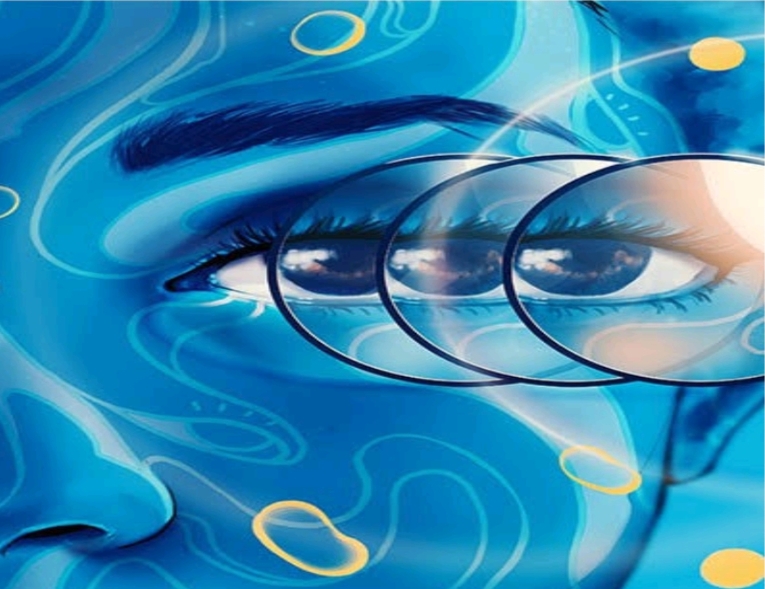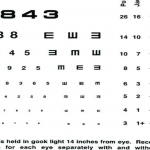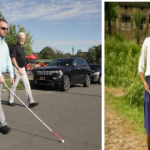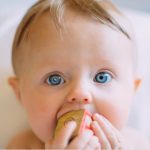Blindness is a disease in which a person’s vision is reduced and he/she can see almost nothing .
WHO Definition of blindness – If a person’s visual acuity in better eye is less than 3/60 then he or she will considered as a blind person .
NPCB definition of blindness – presenting distance visual acuity less than 3/60 in the better eye and / or limitation of field of vision to be less than 10 degrees from the centre of fixation .
Causes of blindness – Major disease that cause blindness , they are –
i. Cataract
ii. Xerophthalmia
iii. Glaucoma
iv. Trachoma
v. Even refractive errors are the most common causes of blindness in world-wide.
vi. Congenital
Symptoms of Blindness –
i. Eyeache
ii. Inability to see shapes
iii. Vision is less than 3/60 in better eye
iv. Visual field loss
v. Corneal damage
vi. Night blindness
Some initiatives have been taken to reduce blindness –
Vision 2020 – The Right to Sight is the global initiative for the elimination of avoidable blindness , a joint programme of the World Health Organization (WHO) and the International Agency for the prevention of blindness.
It was launched in 1999
Five disease have identified as immediate priorities in Vision 2020 programme
i. Cataract
ii. Trachoma
iii. Oncherciasis
iv. Childhood blindness
v. Refractive errors and low vision
resettlement of a blind person from most common diseases –
*Cataract* –
Cataract is the most common cause of blindness overall worldwide. Cataract means that the lens of the eye will gradually harden and it will turn white, so the patient will not be able to see anything . A person with mature cataract can see almost nothing . If someone’s cataract progress to grade 4 , their vision come down to finger counting.
Signs and symptoms –
i. Blurry vision
ii. Lens become harder
iii. Lens become whiter
iv. Light sensitivity
v. Diplopia
Treatment – Their is no specific medicine for this disease . If someone have mature cataract then they must operate the cataract because he/she will not be able to see anything until the operation is done. Surgery is the only way to survive this disease. There are to popular method of cataract surgery , they are – SICS and PHACO . After the surgery there is 90 % chance of vision recovery.
*Glaucoma* –
Glaucoma is the 2nd most common cause of blindness worldwide . Glaucoma is a disease where visual field is loss due to persistent raised of IOP [ Intra Ocular Pressure ] .It can damage our optic nerve . There are 2 types of Glaucoma – i. Open angle glaucoma ii. Angle closure glaucoma
A person with glaucoma has a high risk of increased IOP in the eye . In glaucoma , the visual field of a person’s eye is damaged and subsequently he can’t see nothing .
Signs and symptoms –
i. Eye pain
ii. Raised IOP
iii. Visual field loss
iv. Halos or colored rings around lights.
v. Eye redness
Treatment- Some improvements is possible with medication and surgery
Medications –
a. Timolol , levabunolol , betaxolol decrease aqueous humor production by the epithelium of the cilliary body.
b. Alpha -2 – adrenergic agonist , such as brimonidine , apraclonidine work by a dual mechanism ,decreasing aqueous humor production and increasing uvoscleral
iii. Miotics agents , such as pilocarpine , work by contraction of the cilliary muscle , opening the trabecular meshwork and allowing increased outflow of the aqueous humor .
Surgery –
a. Trabeculectomy – It is a gold standard that lowers the pressure inside the eye . It is successful about 60 – 80% of the time in controlling the eye pressure.
b. Iridectomy – Iridectomy can be performed on patients diagnosed with closed angle glaucoma . Iridectomy is a surgical procedure of glaucoma to remove a part of the iris .
*Xerophthalmia* –
Xerophthalmia is a systemic disease caused by Vit A deficiency. It affects cells and organs of our eye . It is also called nutritional blindness .
Signs and symptoms –
i. Night blindness
ii. Bitot’s spot
iii. Corneal ulcer
iv. Photophobia
v. Conjunctival Xerosis
vi. Corneal Xerosis
Xerophthalmia is also a most common cause of blindness specially in children .
Classification –
XN – Night blindness
X1A – Conjunctival Xerosis
X1B – Bitot’s spot
X2 – Corneal xerosis
X3A – Keratomalacia
X3B – Corneal ulcer
XS – Corneal ulcer
XF – Xerophthalmic fundus
Treatment –
i. Children between 6-11 months – 100,000 IU Vit A orally
ii. Children less than 6 months – 50000 IU Vit A orally is given
iii. Antibiotics are used , like – Moxifloxacin , Gatifloxacin .
iv. Artificial tears are also used in treatment of Vit A like – Carboxymethyle Cellulose , Hydroxi propyle Methyle Cellulose etc.
v. Atropine eye ointment is used BD daily
* Eat foods that provide vitamin A
Source of vitamin A
i. Vegetables – Carrot , Tomato , Green Vegetables .
ii. Animal source – liver , meat , shark – liver oil
If these procedures are followed and treated , there is a possibility of regaining the eyesight of the people who affected by Vit A deficiency.
*Trachoma* –
Trachoma is a also most common cause of blindness .It is a bacterial disease that affects directly of our cornea . It is a contagious disease . If this disease goes to the last stage , it can make any person blind for life . Globally about 80 million people have an active infection . It is usually seen in children . Trachoma damage our cornea as well as whole palpebral and limbal portion of our eye .
Symptoms –
i. Photophobia
ii. Discharge
iii. Swelling of eyelids
iv. Conjunctivitis
v. Itching and watering
vi. Foreign body sensation
Treatment –
i. Broad spectrum antibiotics are used as ointment
ii. Oral doxycycline – 100mg for 3-4 weeks
iii. SAFE strategy was adopted for this disease at vision 2020
S – Surgery for Trichiasis
A – Antibiotics to treat active disease
F – Facial cleanness
E – Environment Improvements
iv. Surgery is required for some cases
By doing these treatment , there is a possibility of regaining people’s sight .
*Refractive error* –
Refractive error is also most common in cause of blindness . 12.3% was estimated blindness to be due to uncorrected refractive error . It occurs when the eye cann’t clearly focus the images from the outside world . Normally light coming from infinity focused on the sensitive part on the retina , when that happens we see well , and if there is an exception then we don’t see properly . There are 3 most common types of refractive error -> i. Hypermetropia ii. Myopia and iii. Astigmatism
Hypermetropia – when light rays coming from infinity and focused on posterior part of the retina
Myopia – when light rays coming from infinity and focused on inferior part of the retina .
Astigmatism – when the refractive system is unequal in different meridian and light coming from infinity focused different part of the retina .
Treatment –
i. In Hypermetropia convex lens are prescribed
ii. In Myopia concave lens are prescribed
iii. In Astigmatism cylindrical lenses are prescribed .
If the refractive error is not treated, various problems can occur such as amblyopia, diplopia, squint arrest. Refractive glasses should be given to needy patients.The government should work on this issue and organize free camps in different places so that the needy can get glasses according to their power of refraction , So that they can save everyone from this viewing problem especially children .






